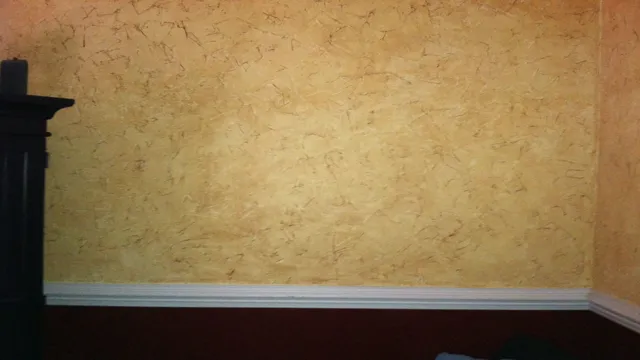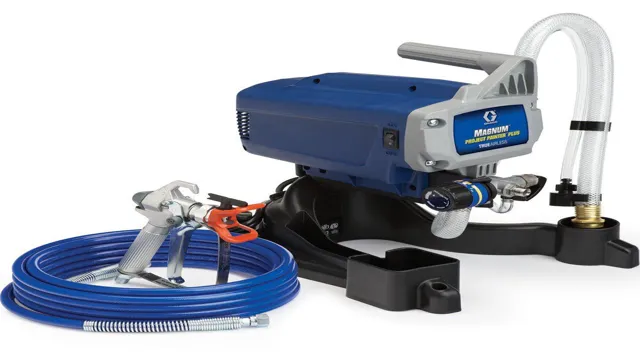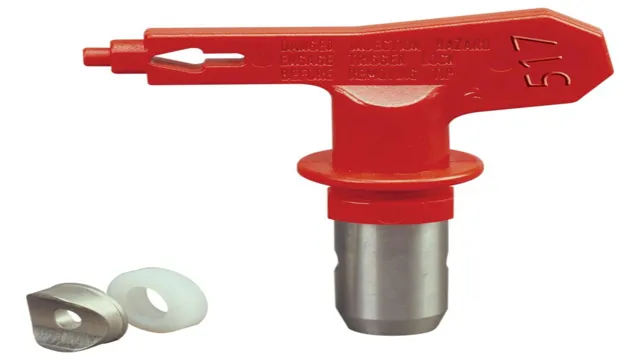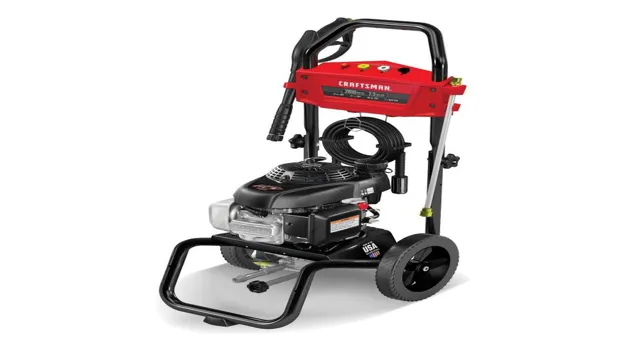
Have you ever experienced weird lines and patterns when using a paint sprayer? Fret not! You’re not alone. It’s a common issue that many DIYers and professionals alike face. Getting a seemingly perfect finish, then seeing unwanted lines and patterns can be frustrating.
But don’t give up just yet; there’s a solution. Solving the problem of paint sprayer lines is a lot easier than you think, and with a little patience, you’ll be back on track to achieving that flawless finish you’ve been dreaming of. The causes of paint sprayer lines are quite easy to diagnose, such as clogged tips, low pressure, thin paint, and more.
But the solution lies in how you troubleshoot the problem. It’s more of a DIY issue and doesn’t require professional help. The good news is that you don’t need any technical skills to stop paint sprayer lines from ruining your next project.
In this blog, we’ll explore different causes of paint sprayer lines and how to resolve them without breaking a sweat. Get ready to unleash your inner Bob Ross and be amazed at how easy it is to solve this common problem. Whether you’re a seasoned painter or a newbie trying your hand at DIY projects, you’ll find useful information to help you get the flawless finish you’ve been craving.
Understanding the Problem
So, you busted out your paint sprayer, ready to tackle that big painting project you’ve been putting off. But as soon as you start spraying, you notice lines appearing in the paint. What gives? The most common reason for paint sprayer lines is an uneven or poorly prepared surface.
When the paint sprayer hits bumps or ridges in the surface, it can create lines in the paint. Another possibility is clogged or worn-out nozzles, which can cause the paint to spray unevenly or in a narrow, concentrated stream. It’s also possible that the paint itself is the culprit.
If the paint is too thick or hasn’t been properly mixed, it may clog the sprayer’s nozzle or create uneven patterns on the surface. So before you start painting, make sure your surface is smooth and clean, your sprayer’s nozzles are clean and in good condition, and your paint is the right consistency and has been mixed thoroughly. By doing so, lines in your paint will become a thing of the past.
The Causes of Paint Sprayer Lines
Paint sprayer lines can be a frustrating problem for anyone who has used a paint sprayer. These lines can ruin the finish and can be difficult to remove. The causes of paint sprayer lines are often related to the equipment being used.
One common cause is a clogged nozzle. When the nozzle becomes clogged, it can cause uneven spray patterns that result in lines. Another cause is inadequate pressure, which can cause the paint to spatter and create lines.
In addition, using the wrong type of paint or thinning the paint too much can also contribute to the problem. It’s important to understand the root cause of paint sprayer lines in order to prevent them from occurring in the first place. By regularly cleaning and maintaining the equipment and using the right paint and pressure settings, you can avoid this problem and achieve a smooth and efficient finish.

Examples of Paint Sprayer Lines
Have you ever found yourself in a paint store, overwhelmed by the variety of paint sprayer lines available? Don’t worry, you’re not alone. With so many options and brands, it can be challenging to know which paint sprayer line is the right choice for your project. One of the critical factors you should consider is the type of paint you’ll be using.
Different paint types require different spray patterns, nozzle sizes, and pressure levels. For example, if you’re using latex paint, you’ll need a sprayer line that can handle thicker paints and provide fine coverage. On the other hand, if you’re using oil-based paint, you’ll need a sprayer line that can spray at high pressure to achieve a smooth finish.
By understanding the properties of your paint, you can make a more informed decision when choosing the best paint sprayer line for your project.
Solving the Problem
If you’ve ever had the frustration of looking at your freshly painted surface only to notice unsightly streaks or lines, you’re not alone. There are a few reasons why a paint sprayer may be leaving lines on your surface. One common culprit is an incorrect buildup of paint on the surface.
This means that the paint isn’t being evenly distributed, which can result in visible lines or uneven coverage. Another common cause is an incorrect technique. If you’re not holding the sprayer at the correct angle or distance from the surface, it can create a spotty or streaky finish.
Finally, a clogged or dirty sprayer nozzle can affect the flow of paint and cause inconsistencies in the finish. To solve this problem, ensure that you’re using the correct technique, keeping your nozzle clean and unclogged, and checking the evenness of paint buildup on the surface as you work. By taking these steps, you can achieve a smooth and even finish that you’ll be proud to show off.
Preventative Measures
Preventative Measures for Solving the Burst Pipe Problem Dealing with a burst pipe can be a homeowner’s worst nightmare. However, preventative measures can be taken to avoid such an unfortunate situation. Firstly, it is important to ensure that pipes are insulated and all areas where cold air enters are sealed.
This will help to prevent the pipes from freezing and eventually bursting. Secondly, regular maintenance of the plumbing system can also go a long way in avoiding burst pipes. Ensuring that there are no leaks, corrosion or blockages can prevent undue stress on the pipes.
Lastly, it is crucial to know where the main water shut off valve is located, as this will allow quick response in the event of a burst pipe. Taking preventative measures can save homeowners thousands of dollars, time and energy. While it may seem like an unnecessary expense, the cost of regular maintenance and insulation is a fraction of what is required to fix the damages caused by a burst pipe.
By being proactive, homeowners can also avoid the stress and inconvenience associated with the cleanup and restoration process. Therefore, prevention is indeed better than cure, and going the extra mile to ensure that the pipes are in good condition may just be the difference between a dry and comfortable home, and a disastrous one.
Troubleshooting Steps
When facing a problem, the first step to solving it is to remain calm and prevent any panic. It is essential to identify the source of the issue and understand the cause of the problem. One of the most effective troubleshooting steps is to break down the problem into simpler parts.
This allows one to isolate and identify the specific cause, making it easier to tackle. Once the problem is identified, it is essential to research and gather any relevant information and solutions. As part of the troubleshooting steps, testing the different options and solutions can also help identify the best course of action.
It is vital to keep an open mind and remain flexible, trying various approaches until the issue is resolved. It is also worth seeking expert advice or collaborating with others who may have relevant experience and insight. By taking these steps, one can solve the problem effectively and ensure a successful outcome.
Tools to Help Eliminate Paint Sprayer Lines
If you’re tired of dealing with those annoying paint sprayer lines ruining your hard work, don’t worry. There are some tools that can help you eliminate them for good. One great option is to use a high-quality paint strainer that can remove any debris or impurities from your paint before it even reaches the sprayer.
Additionally, you may want to invest in a pressure regulator to help ensure a consistent flow of paint without any sudden bursts or drops in pressure. And finally, make sure to clean your sprayer thoroughly after each use to prevent any buildup or clogs that could lead to those frustrating lines appearing on your project. By using these tools and techniques, you can say goodbye to those pesky paint sprayer lines and enjoy a flawless finish on all of your future painting projects.
Tips for a Perfect Finish
Are you experiencing lines or streaks while painting with your sprayer? There could be several reasons why your paint sprayer is leaving lines. First off, make sure you’re using the correct tip for your paint, as using the wrong one can lead to uneven coverage. Another reason could be that your sprayer requires more thinning of the paint for it to atomize and distribute evenly.
Also, check the air pressure settings on your sprayer, as too little or too much pressure can cause lines. Additionally, make sure you’re moving the sprayer evenly and at a consistent speed across the surface. Taking breaks in between sections can also lead to lines or streaks in the paint.
By keeping these tips in mind and using the right techniques, you can achieve a perfect finish every time with your paint sprayer.
Techniques for Smooth Application
When it comes to applying makeup, every little detail counts. From the type of brush you use to the amount of pressure you apply, everything can make a difference in the final result. To ensure a perfect finish, there are a few tips that you can follow.
Firstly, always start by prepping your skin with a moisturizer and/or a face primer. This will help create a smooth canvas for your makeup to adhere to. Secondly, when applying foundation, use a beauty sponge or a brush to gently blend it in.
Be sure to blend it down your neck so that there’s no harsh line. Thirdly, use a concealer to cover any blemishes or dark circles. A trick is to apply it in an upside-down triangle shape under your eyes, as this will help brighten up your face.
Fourthly, set your makeup with a finishing powder or a setting spray. This will help ensure that your makeup stays in place all day. And finally, always remember to blend, blend, blend! Blending is the key to a flawless finish.
By following these tips, you’ll be on your way to achieving a perfect makeup application every time.
Choosing the Right Paint Sprayer and Materials
Choosing the right paint sprayer and materials for your project can be a daunting task, but with a little bit of knowledge, you can achieve a perfect finish. When selecting a paint sprayer, consider the type of project you are working on and the kind of paint you will be using. Airless sprayers are great for larger projects like exteriors, while HVLP sprayers are better suited for smaller, more detailed work like furniture refinishing.
When it comes to materials, using high-quality paint and accessories like primers and sealers will ensure a smooth and durable finish. It’s also important to properly prepare the surface before painting, which can include sanding, cleaning, and patching any imperfections. Remember, the key to a successful paint job is in the preparation and attention to detail.
So take your time, follow these tips, and you’ll be amazed at the final result!
Conclusion
In the end, it turns out that a paint sprayer leaving lines is the artistic equivalent of a bad hair day. Just like how it takes effort and care to achieve a perfect hairstyle, using a paint sprayer requires attention to detail and proper technique. With a little bit of practice and the right equipment, you’ll be painting your heart out with flawless results in no time.
So, don’t let those pesky lines hold you back from your creative vision – tackle them head on and unleash your inner Jackson Pollock.”
FAQs
What causes the lines in my paint sprayer output?
There are several reasons why lines could be appearing in your paint output. It could be due to a dirty or clogged nozzle, uneven paint viscosity, or improper spraying technique.
How can I ensure even paint coverage with my sprayer?
To ensure even paint coverage, make sure you are using the correct tip for your chosen paint type, apply multiple thin coats rather than one thick coat, and maintain a consistent distance and speed while spraying.
What types of paints can I use with my sprayer?
Paint sprayers are capable of handling a range of different types of paint, including latex, oil-based, and lacquer. However, it is important to ensure that your sprayer is compatible with your chosen paint type.
How often should I clean my paint sprayer?
It is recommended to clean your paint sprayer after every use to prevent clogging and ensure optimal performance. If you are using a high-volume paint sprayer, you may need to clean it more frequently.
Can I use my paint sprayer to apply stains or sealers?
Yes, paint sprayers can be used to apply stains and sealers. However, it is important to choose a sprayer with the appropriate tip size for the product you are using and to properly prepare the surface before application.
How can I prevent overspray with my sprayer?
To prevent overspray, mask off surrounding areas with tape and plastic sheeting, adjust your sprayer’s pressure settings and tip size, and move the sprayer in a controlled and consistent motion.
How do I troubleshoot problems with my paint sprayer?
If you are experiencing issues with your paint sprayer, try cleaning the nozzle and filter, checking for proper paint viscosity, and adjusting the pressure settings. If the problem persists, consult the manufacturer’s instructions or a professional.






